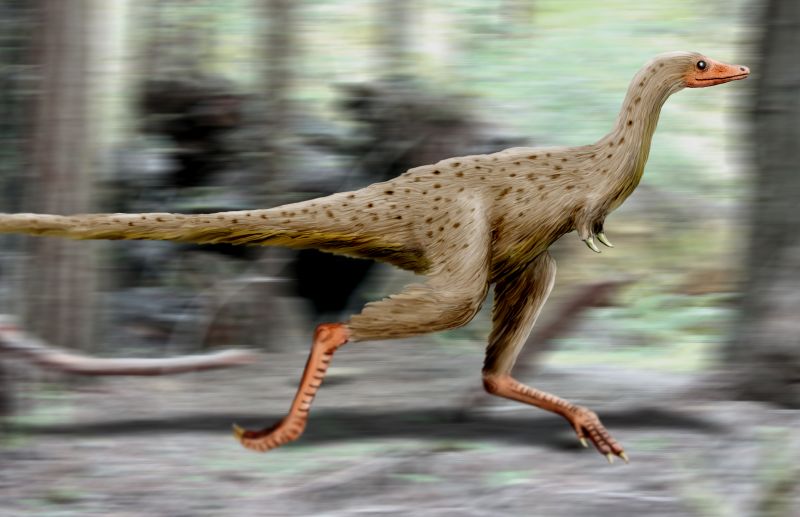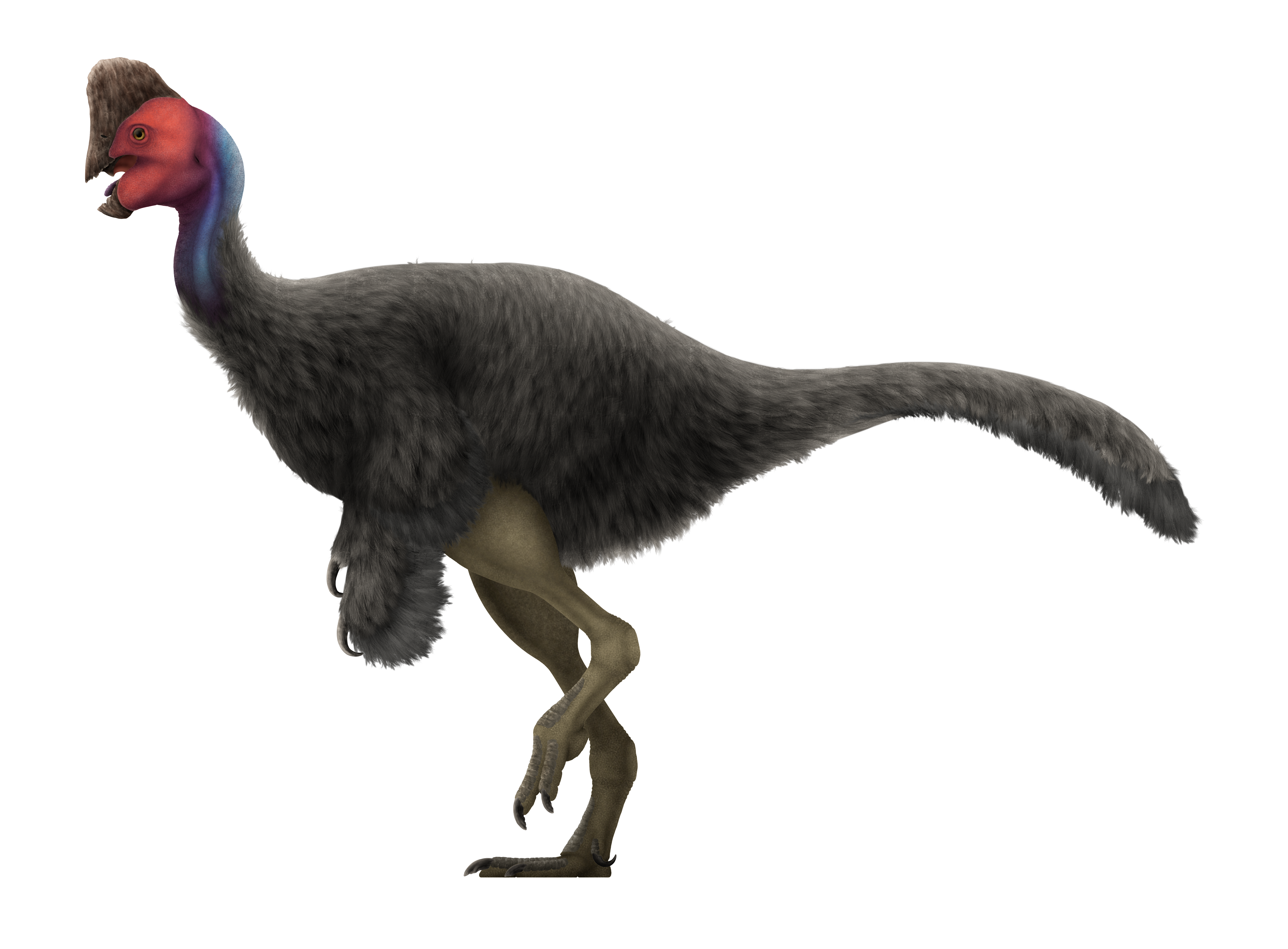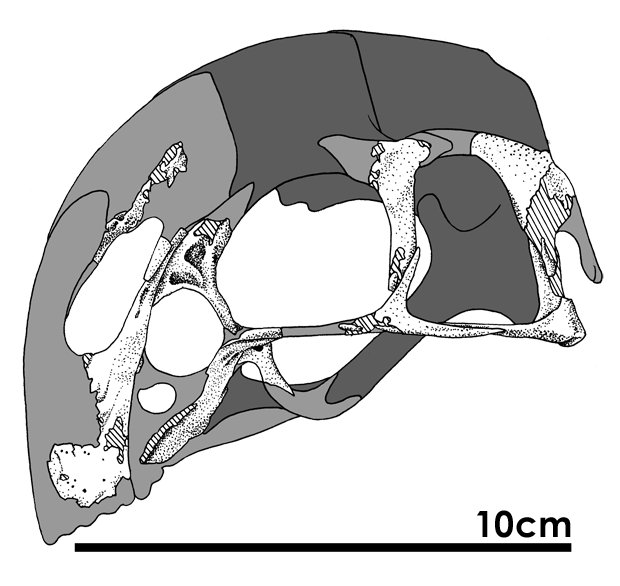|
Wulatelong Skull
''Wulatelong'' is an extinct genus of basal oviraptorid dinosaur known from the Late Cretaceous Wulansuhai Formation (Campanian stage) of Bayan Mandahu, Linhe District of Inner Mongolia, northern China. It contains a single species, ''Wulatelong gobiensis''. History The fossils of ''Wulatelong'', representing a single nearly-complete skeleton, now cataloged IVPP V 18409, were discovered in 2009 in the Bayan Mandahu area of Wulatehouqi, Inner Mongolia, a fossil-rich area which has yielded many recent dinosaur discoveries. The authors of the paper describing ''Wulatelong'' had previously described the dromaeosaurid ''Linheraptor'' (2010), the alvarezsaurid ''Linhenykus'' (2011), and the troodontid ''Linhevenator'' (2011). ''Wulatelong'' was described by Xu ''et al.'' in 2013. The generic name derives from ''Wulate'', where the fossils were discovered, and ''long'', the Chinese word for "dragon". The specific name, ''gobiensis'', refers to the Gobi Desert. Classification ''Wulatel ... [...More Info...] [...Related Items...] OR: [Wikipedia] [Google] [Baidu] |
Campanian
The Campanian is the fifth of six ages of the Late Cretaceous Epoch on the geologic timescale of the International Commission on Stratigraphy (ICS). In chronostratigraphy, it is the fifth of six stages in the Upper Cretaceous Series. Campanian spans the time from 83.6 (± 0.2) to 72.1 (± 0.2) million years ago. It is preceded by the Santonian and it is followed by the Maastrichtian. The Campanian was an age when a worldwide sea level rise covered many coastal areas. The morphology of some of these areas has been preserved: it is an unconformity beneath a cover of marine sedimentary rocks. Etymology The Campanian was introduced in scientific literature by Henri Coquand in 1857. It is named after the French village of Champagne in the department of Charente-Maritime. The original type locality was a series of outcrop near the village of Aubeterre-sur-Dronne in the same region. Definition The base of the Campanian Stage is defined as a place in the stratigraphic column wher ... [...More Info...] [...Related Items...] OR: [Wikipedia] [Google] [Baidu] |
Linhenykus
''Linhenykus'' is an extinct genus of alvarezsaurid theropod dinosaur from the Late Cretaceous of Inner Mongolia, China. It is the most basal known member of the Parvicursorinae. The genus gets its name from Linhe, a city near the site where the fossil was first found and Greek ''nykus'', "claw". The specific name is derived from Greek ''monos'', "single", and ''daktylos'', "finger", a reference to the fact that it is the only known non-avian dinosaur to have had but a single digit. Description ''Linhenykus'' was a small dinosaur, measuring long and weighing . Its femur length is . Alvarezsauroids are known for their short forelimbs, each with a single greatly enlarged second digit. Although alvarezsaurids were once thought to have only a single digit on each forelimb, more recent evidence has shown that most species have reduced third and fourth digits. ''Linhenykus'' is the first known alvarezsaurid to have only a single, second digit. Although a reduced third metacarpal ... [...More Info...] [...Related Items...] OR: [Wikipedia] [Google] [Baidu] |
Rinchenia Mongoliensis
''Rinchenia'' (named after Byambyn Rinchen) is a genus of oviraptorid dinosaur that lived in Asia during the Late Cretaceous epoch in what is now Mongolia, Nemegt Formation, around 70 million years ago. The type and only known species, ''Rinchenia mongoliensis'', was originally classified as a species within the genus '' Oviraptor'' (named ''Oviraptor mongoliensis''), but a subsequent rexamination found differences significant enough to warrant a separate genus. The name ''Rinchenia'' was coined for this new genus, though not formally described in detail. History of discovery During 1984, a nearly complete oviraptorid skeleton was discovered at the Altan Uul II (or Altan Ula II) locality of the highly fossiliferous Nemegt Formation, Gobi Desert. This newly collected specimen, MPC-D 100/32-A, included the skull and lower jaws in their entirety, nearly complete vertebral column, forelimbs with shoulder girdle, and partial hindlimbs with pelvic girdle. Later on, Mongolian paleon ... [...More Info...] [...Related Items...] OR: [Wikipedia] [Google] [Baidu] |
Oviraptor Philoceratops
''Oviraptor'' (; ) is a genus of oviraptorid dinosaur that lived in Asia during the Late Cretaceous period. The first remains were collected from the Djadokhta Formation of Mongolia in 1923 during a paleontological expedition led by Roy Chapman Andrews, and in the following year the genus and type species ''Oviraptor philoceratops'' were named by Henry Fairfield Osborn. The genus name refers to the initial thought of egg-stealing habits, and the specific name was intended to reinforce this view indicating a preference over ceratopsian eggs. Despite the fact that numerous specimens have been referred to the genus, ''Oviraptor'' is only known from a single partial skeleton regarded as the holotype, as well as a nest of about fifteen eggs and several small fragments from a juvenile. ''Oviraptor'' was a rather small feathered oviraptorid, estimated at long with a weight between . It had a wide lower jaw with a skull that likely had a crest. Both upper and lower jaws were toothles ... [...More Info...] [...Related Items...] OR: [Wikipedia] [Google] [Baidu] |
Nomingia Gobiensis
''Nomingia'' is a genus of oviraptorid theropod dinosaur hailing from the Late Cretaceous Bugin Tsav Beds of Mongolia. Discovery and naming The remains, consisting of most of the vertebral column, pelvic girdle and left tibio-tarsus, holotype GIN 100/119, were found in 1994 in layers of the Nemegt Svita, dating to the Maastrichtian. They were named and described as the type species ''Nomingia gobiensis'' by Barsbold, Halszka Osmólska, Mahito Watabe, Philip Currie and Khishigjaw Tsogtbaatar in 2000. The etymology of the binomial refers to the location where the fossils were found, with the generic name mentioning the Nomingiin Gobi, a nearby part of the Gobi Desert, which is itself mentioned in the specific descriptor. A 2021 article by Funston and colleagues suggested ''Nomingia'' is a synonym of ''Elmisaurus''. Description ''Nomingia'' is a medium-sized oviraptorosaur, estimated by Gregory S. Paul to have been long and in weight.Paul, G.S., 2010, ''The Prince ... [...More Info...] [...Related Items...] OR: [Wikipedia] [Google] [Baidu] |
Yulong Mini
''Yulong'' is an extinct genus of derived oviraptorid theropod dinosaur known from the Late Cretaceous Qiupa Formation of Henan Province, central China. It contains a single species, ''Yulong mini''. It is known from many juvenile specimens that represent some of the smallest known oviraptorids and also a single subadult specimen. Discovery and naming Specimens of ''Yulong'' were collected near Qiupa Town in Luanchuan County, Henan Province, from the Qiupa Formation. The exact geological age of the Qiupa Formation is unknown, but it probably dates to the Late Cretaceous based on the presence of oviraptorids (''Yulong''), dromaeosaurids (''Luanchuanraptor''), ornithomimids (''Qiupalong''), alvarezsaurs (''Qiupanykus'') and other, undescribed, derived dinosaur specimens. ''Yulong'' was first described and named by Junchang Lü, Philip J. Currie, Li Xu, Xingliao Zhang, Hanyong Pu and Songhai Jia in 2013 and the type species is ''Yulong mini''. The generic name is derived fr ... [...More Info...] [...Related Items...] OR: [Wikipedia] [Google] [Baidu] |
Nankangia Jiangxiensis
''Nankangia'' is an extinct genus of caenagnathoid oviraptorosaurian dinosaur known from the Upper Cretaceous Nanxiong Formation of Nankang County, Ganzhou City of Jiangxi Province, southeastern China. It contains a single species, ''Nankangia jiangxiensis''. ''N. jiangxiensis'' coexisted with at least four other caenagnathoids, including but not limited to ''Corythoraptor'', '' Banji long'', ''Ganzhousaurus nankangensis'' and ''Jiangxisaurus ganzhouensis''. The relatively short dentary and non-downturned mandibular symphysis of ''Nankangia'' suggest that it may have been more herbivorous than carnivorous. Its diet consisted of leaves and seeds. Discovery ''Nankangia'' was first described and named by Lü Junchang, Yi Laiping, Zhong Hui and Wei Xuefang in 2013 and the type species is ''Nankangia jiangxiensis''. The generic name honors the Chinese administrative unit Nankang County in Jiangxi Province, and the specific name honors the province where the holotype site in Nankan ... [...More Info...] [...Related Items...] OR: [Wikipedia] [Google] [Baidu] |
Oviraptoridae
Oviraptoridae is a group of bird-like, herbivorous and omnivorous maniraptoran dinosaurs. Oviraptorids are characterized by their toothless, parrot-like beaks and, in some cases, elaborate crests. They were generally small, measuring between one and two metres long in most cases, though some possible oviraptorids were enormous. Oviraptorids are currently known only from the Late Cretaceous of Asia, with the most well-known species and complete specimens found only in the Gobi Desert of Mongolia and northwestern China. Description The most characteristic feature of this group is the skull structure. Oviraptorids had short snouts and very deep mandibles. Some taxa (such as ''Citipati'', ''Corythoraptor'', ''Rinchenia'') had a midline crest on top of the skull, resembling that of a cassowary. Other distinguishing characteristics include a bony spike intruding on the mandibular fenestra, nostrils placed very high and far back on the snout, an extremely thin bony bar beneath the eye, ... [...More Info...] [...Related Items...] OR: [Wikipedia] [Google] [Baidu] |
Caenagnathidae
Caenagnathidae is a family of bird-like maniraptoran theropod dinosaurs from the Cretaceous of North America and Asia. They are a member of the Oviraptorosauria, and close relatives of the Oviraptoridae. Like other oviraptorosaurs, caenagnathids had specialized beaks, long necks, and short tails, and would have been covered in feathers. The relationships of caenagnathids were long a puzzle. The family was originally named by Raymond Martin Sternberg in 1940 as a family of flightless birds. The discovery of skeletons of the related oviraptorids revealed that they were in fact non-avian theropods, and the discovery of more complete caenagnathid remains revealed that ''Chirostenotes pergracilis'', originally named on the basis of a pair of hands, and ''Citipes elegans'', originally thought to be an ornithomimid, named from a foot, were caenagnathids as well. Anatomy Overall, the anatomy of the caenagnathids is similar to that of the closely related Oviraptoridae, but there are a n ... [...More Info...] [...Related Items...] OR: [Wikipedia] [Google] [Baidu] |
Caenagnathoidea
Caenagnathoidea ("recent jaw forms") is a group of advanced oviraptorosaurian dinosaurs from the Cretaceous Period (geology), Period of what are now Asia and North America. They are distinct for their characteristically short, beaked, parrot-like skulls, often with bony crests atop the head. They ranged in size from ''Caudipteryx'', which was the size of a turkey, to the 8 meter long, 1.4 ton ''Gigantoraptor''.Xu, X., Tan, Q., Wang, J., Zhao, X., and Tan, L. (2007). "A gigantic bird-like dinosaur from the Late Cretaceous of China." ''Nature'', 447: 844-847. The group (along with all maniraptoran dinosaurs) is close to the ancestry of birds. The most complete specimens have been found in Asia, representing members of the sub-group Oviraptorinae. Notable but fragmentary remains are also known from North America, almost all of which belong to the subgroup Elmisaurinae.Varricchio, D. J. 2001. Late Cretaceous oviraptorosaur (Theropoda) dinosaurs from Montana. pp. 42–57 in D. H. Tanke ... [...More Info...] [...Related Items...] OR: [Wikipedia] [Google] [Baidu] |
Wulatelong Skull
''Wulatelong'' is an extinct genus of basal oviraptorid dinosaur known from the Late Cretaceous Wulansuhai Formation (Campanian stage) of Bayan Mandahu, Linhe District of Inner Mongolia, northern China. It contains a single species, ''Wulatelong gobiensis''. History The fossils of ''Wulatelong'', representing a single nearly-complete skeleton, now cataloged IVPP V 18409, were discovered in 2009 in the Bayan Mandahu area of Wulatehouqi, Inner Mongolia, a fossil-rich area which has yielded many recent dinosaur discoveries. The authors of the paper describing ''Wulatelong'' had previously described the dromaeosaurid ''Linheraptor'' (2010), the alvarezsaurid ''Linhenykus'' (2011), and the troodontid ''Linhevenator'' (2011). ''Wulatelong'' was described by Xu ''et al.'' in 2013. The generic name derives from ''Wulate'', where the fossils were discovered, and ''long'', the Chinese word for "dragon". The specific name, ''gobiensis'', refers to the Gobi Desert. Classification ''Wulatel ... [...More Info...] [...Related Items...] OR: [Wikipedia] [Google] [Baidu] |
Theropod
Theropoda (; ), whose members are known as theropods, is a dinosaur clade that is characterized by hollow bones and three toes and claws on each limb. Theropods are generally classed as a group of saurischian dinosaurs. They were ancestrally carnivorous, although a number of theropod groups evolved to become herbivores and omnivores. Theropods first appeared during the Carnian age of the late Triassic period 231.4 million years ago ( Ma) and included all the large terrestrial carnivores from the Early Jurassic until at least the close of the Cretaceous, about 66 Ma. In the Jurassic, birds evolved from small specialized coelurosaurian theropods, and are today represented by about 10,500 living species. Biology Diet and teeth Theropods exhibit a wide range of diets, from insectivores to herbivores and carnivores. Strict carnivory has always been considered the ancestral diet for theropods as a group, and a wider variety of diets was historically considered a characteri ... [...More Info...] [...Related Items...] OR: [Wikipedia] [Google] [Baidu] |









